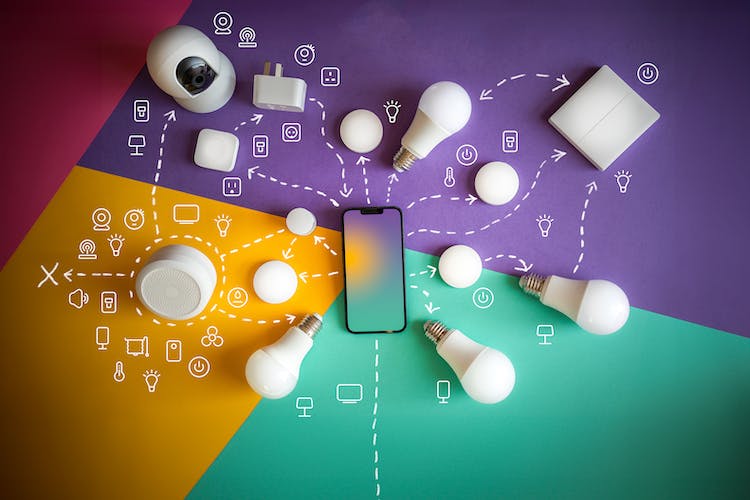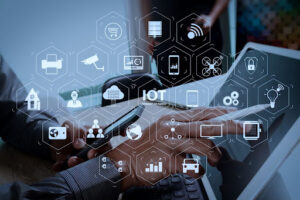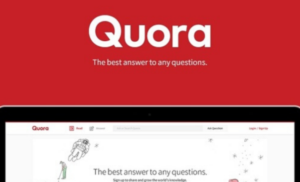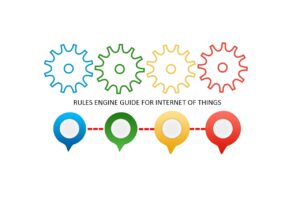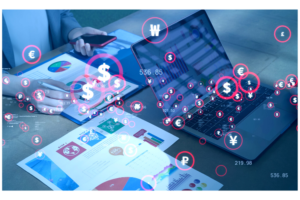IoT technology can transform power grid management by increasing visibility, improving maintenance, optimizing power distribution and more. With IoT devices, utility companies can autonomously monitor their grid infrastructure around the clock. What are the benefits of continuous IoT monitoring? How can IoT tech help utility companies build more resilient grids?
Automated Grid Monitoring
“The top benefit of integrating IoT in the power grid is automated monitoring. IoT sensor data is invaluable for tracking power grids’ mechanical and structural health.”
Connected sensors allow utility companies to monitor their infrastructure in real-time, as well. So personnel can respond immediately if there is an outage or maintenance issue.
Automated monitoring results in lower labor costs and less time spent on unnecessary inspections. It can allow utility companies to operate with smaller teams and use resources more efficiently. Continuous automated monitoring even improves safety by giving utility companies constant visibility of their entire grid. Utility personnel will know immediately if there is a surge, outage or other dangerous maintenance issue.
Demand-Responsive Power Distribution
One exciting benefit of automated grid monitoring is the potential for demand-responsive power distribution. IoT allows utility companies to view real-time demand levels across the grid. So, they can adjust power distribution to divert electricity where it is needed most, which improves energy efficiency.
This also means utility companies can create more accurate demand-based pricing models. For example, electricity prices might be higher in a neighborhood of large homes that constantly require large amounts of power. Meanwhile, a small home in a rural area could benefit from more affordable rates due to lower demand for electricity.
Similarly, utility companies can reduce the frequency of surge pricing by expanding grid infrastructure where it is needed most. IoT data provides an accurate, detailed view of how and where people are using power throughout the grid. With this data, utility companies can make data-based decisions about infrastructure expansion.
Predictive Maintenance
Automated, real-time grid monitoring opens the door for more cost-effective maintenance processes. IoT devices are the core of predictive maintenance, which uses data to determine when equipment needs repairs before a breakdown happens. It can save thousands of dollars and countless hours compared to reactive maintenance.
IoT sensors can continuously monitor critical equipment in the grid and alert repair personnel if performance issues appear. Predictive maintenance often catches developing problems long before they cause breakdowns. As a result, predictive maintenance is transformative for preventing outages and downtime in smart grids.
Predictive maintenance can even extend the life span of electrical equipment. Many pieces of equipment, especially transformers, are in short supply and high demand today. Used, refurbished or reconditioned transformers can help meet demand while saving money for utility companies and consumers. However, some utility companies may worry that used equipment isn’t as durable or reliable as new equipment.
IoT-powered predictive maintenance can resolve those concerns. It ensures that all equipment in the grid, new and old, receives the best maintenance possible. As a result, utility companies can maximize the value of their infrastructure and take advantage of cost-effective used equipment options.
Improved Cybersecurity
Utility infrastructure has become a prime target for hackers over recent years. As power grids integrate more technology, they require increasingly advanced security protocols to prevent cyberattacks. Hackers know that if power infrastructure goes offline, even for a short period, it can cause large-scale damage. As a result, utility companies may be more likely to pay off ransomware hackers to get their systems back online.
The 2021 Colonial Pipeline cyberattack is a perfect example. Hackers used a compromised password to access Colonial’s systems through an outdated VPN service. From there, they launched a devastating ransomware attack that temporarily shut down the entire Colonial Pipeline system.
Colonial ended up paying the $5 million ransom the hackers demanded. With the help of the FBI, Colonial eventually recovered about $2.3 million of the cryptocurrency payment. Unfortunately, significant damage was already done.
Utility companies can protect themselves from this kind of situation. IoT devices can improve cybersecurity by increasing visibility. Hackers often leverage poor awareness to use low-traffic corners of a network to gain access. They are betting on the likelihood they will go unnoticed. Utility companies can use IoT to implement continuous 24/7 monitoring to instantly detect any unusual activity throughout their network.
It’s important to note that IoT devices themselves require cybersecurity protections. IoT is ideal for monitoring interactions with physical hardware and works well in conjunction with AI network monitoring on the software side of things. Utility companies can combine the two to maximize grid visibility.
Support for Digital Twin Optimization
“IoT devices are fantastic tools for building up datasets on grid performance.”
Utility companies can use this data to build highly accurate digital twins of their grid infrastructure and distribution systems. A digital twin is invaluable for optimizing electrical grid performance and energy efficiency.
Utility companies can use the realistic simulated environment to test new strategies or systems without disrupting the real-world grid. As a result, they can build safer, smarter, more reliable power grids in a cost-effective manner.
Creating More Resilient Power Grids With IoT
IoT technology is a powerful tool for optimizing and securing electrical grid infrastructure. Utility companies can leverage IoT to increase visibility, optimize power distribution, improve security and more. With the help of IoT, next-gen power grids will be smarter, safer and better prepared for whatever comes their way.

